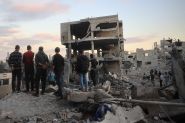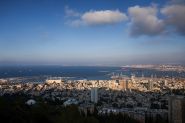- Home
- War in the Middle East
- Scenarios for Iran’s Retaliation: Will Hezbollah Attack a Settlement?

Military sources are exploring numerous scenarios regarding Iran’s retaliation as well as its proxies’ in the region in response to Israel's assassination of Hamas political bureau chief Ismail Haniyeh and senior Hezbollah military commander Fouad Shukr. According to these sources, this time around, these players are not seeking a merely symbolic response. Instead, they aim to retaliate in a way that matches the severity and impact of the attack on the Yemeni port of Hodeidah and the assassinations of Haniyeh and Shukr.
Military sources indicate that Iran and its proxies are preparing a substantial response, even if it risks triggering a full-scale regional war. This raises the question: Will this response achieve its objectives, or will Israel and its allies manage to abort it? Military sources believe that Tehran will not rely solely on launching missiles and drones from its territory, which require several hours to reach their targets in Israel. This delay provides Israel and its international allies with the opportunity to intercept these missiles and drones over neighboring countries such as Lebanon, Syria, Jordan, and Iraq, similar to what happened on April 13.
Therefore, it is expected that Iran and its allies will launch a barrage of missiles and drones from Lebanon and Syria, which will reach their targets within minutes, thereby limiting Israel’s ability to mount an effective defense. However, this does not rule out the possibility of additional missiles and drones being launched from Iranian, Iraqi, and Yemeni territory. Military sources have suggested that this operation could unfold alongside a more significant scenario: Hezbollah launching an assault on an Israeli military site or settlement along the Lebanon border. The sources speculate that such an attack could target locations including the settlement of Metula, which faces Kfar Kila, Adaisseh, Tall al-Nassib, Qlayaa, Marjeyoun, and the Hula Valley. In turn, this implies that an attack on these locations could be launched from multiple directions, with intense artillery and missile fire providing cover. This strategy would disorient Israeli forces and allow Hezbollah fighters to advance through an open, maneuverable terrain. Military sources also suggest that the area is likely mine-free due to its agricultural use on both sides. Additionally, Israeli air support may struggle to counter a large-scale offensive involving hundreds of fighters advancing towards the area.
The aforementioned sources also foresee the possibility of targeting Israeli officials but recognize that this option could be challenging due to heightened Israeli vigilance, especially overseas.
In sum, the “Axis of Resistance” is looking to respond to the recent strikes with a retaliation that creates a significant and enduring impact. Their goal may be to compel Israel to the negotiating table, addressing both the immediate conflicts and the broader Palestinian issue.
Read more



Comments